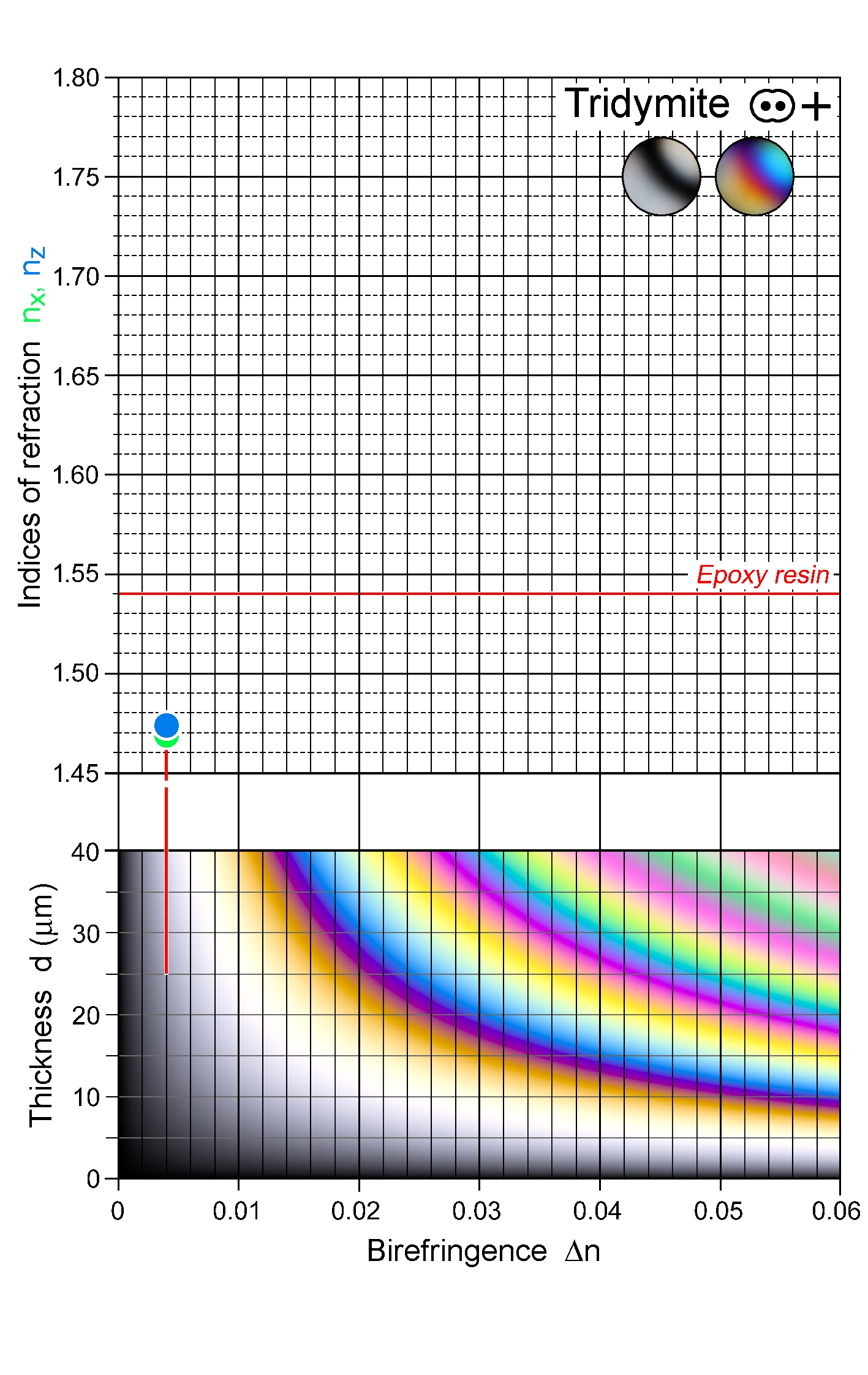|
| Formula | SiO2 |
| | Optic class & sign | Biaxial positive |
| | Optical orientation | X = b, Y = a, Z = c |
| | Optical plane | (100) |
| | Relief | Moderate-negative |
| | Refractive indices | nx = 1.471 -1.479
|
|
ny = 1.472 -1.480
|
|
nz = 1.474 -1.483
|
|
| n increases with substitution of Al+Na for Si |
| | Birefringence (max.) | 0.002 - 0.004 |
| | | |
| | Optic Angle
| 2Vx
|
| | 2Vz
= 35 - 90° |
| | Sign of elongation | Length-fast, l(-) |
| | Interference figure | Impractical due to very low Δn and small crystal size |
| | Colour / pleochroism | Colourless |
| | Zoning | |
|
|
| Form | Habit | Thin hexagonal plates, radiating aggregates, granular |
| | | Surface | Euhedral to anhedral |
| | Cleavage | Poor |
| | Twinning | {1016} in the original hexagonal form: three wedge-shaped segments (‘trillings’); other contact or penetration twins |
| | Extinction | Straight to all principal crystal faces in prismatic sections; sections orthogonal to c: straight to {100} and symmetrical to {111} traces |
|
|
| Reaction textures | Pseudomorphic replacement by fine-grained quartz |
| | Alteration / decomposition | - |
|
|
| Occurence | Ign | Silicic to intermediate volcanic and sub-volcanic rocks; less common in basalts; miarolitic cavities and vesicles |
| | | Met | Contact zones of mafic lavas and sub-intrusives, buchites, silica-rich xenoliths in basalts; pyrometamorphism of siliceous rocks caused by underground combustion of coal |
| | | Sed | |
| | | Hyd | Precipitate from hydrothermal alteration of volcanics |
| | | Other | Stony meteorites |
|
|
| Distinctive properties | Pseudo-hexagonal habit, very low Δn, wedge-shaped twins, moderate-negative relief |
| | Additional comments | Commonly not preserved in rocks older than Tertiary. Low-temperature α-tridymite is commonly paramorphically converted from hexagonal β-tridymite (which is stable between 870 and 1470°C). α-tridymite has no stability field. |
|
|

 Images
Images 


 Images
Images 
